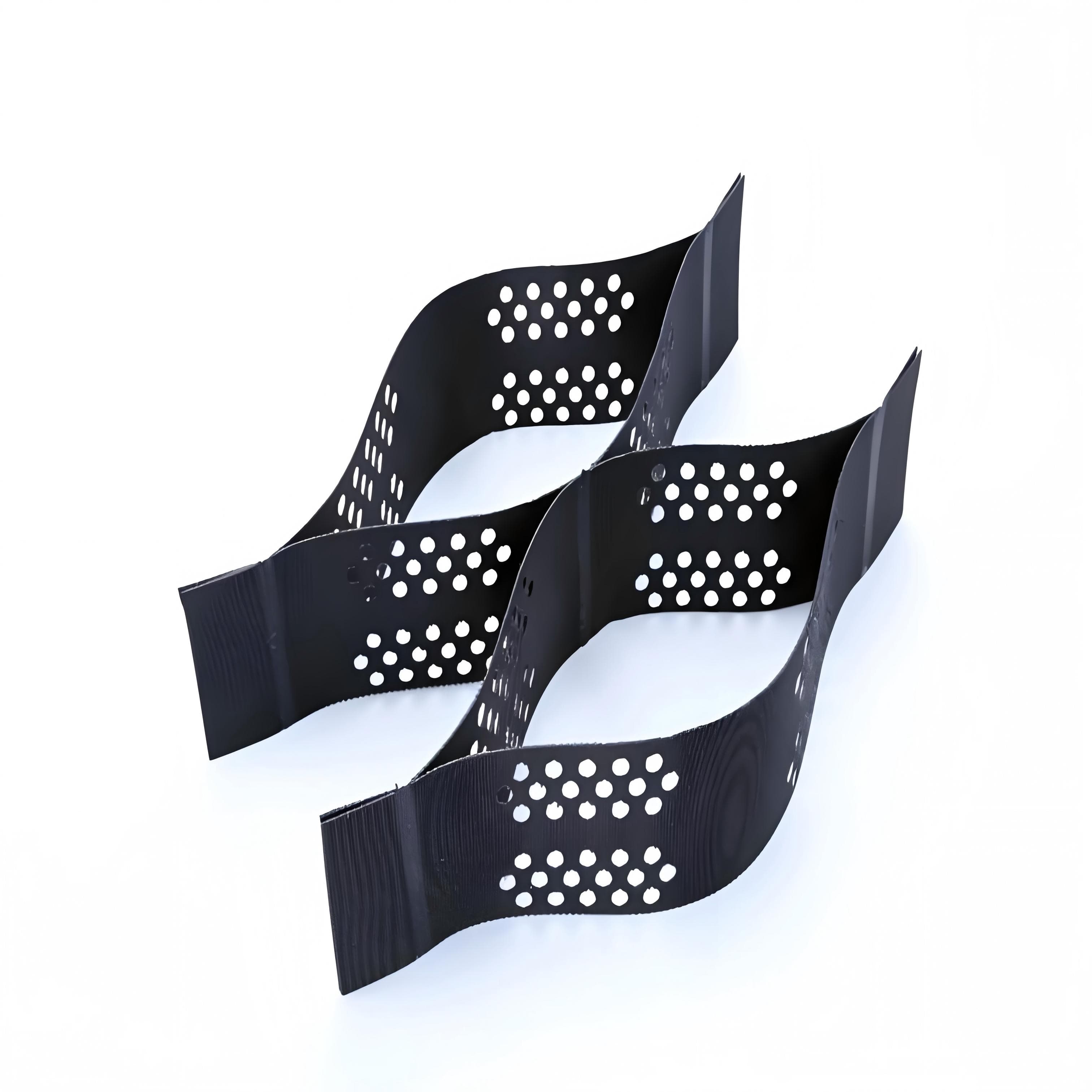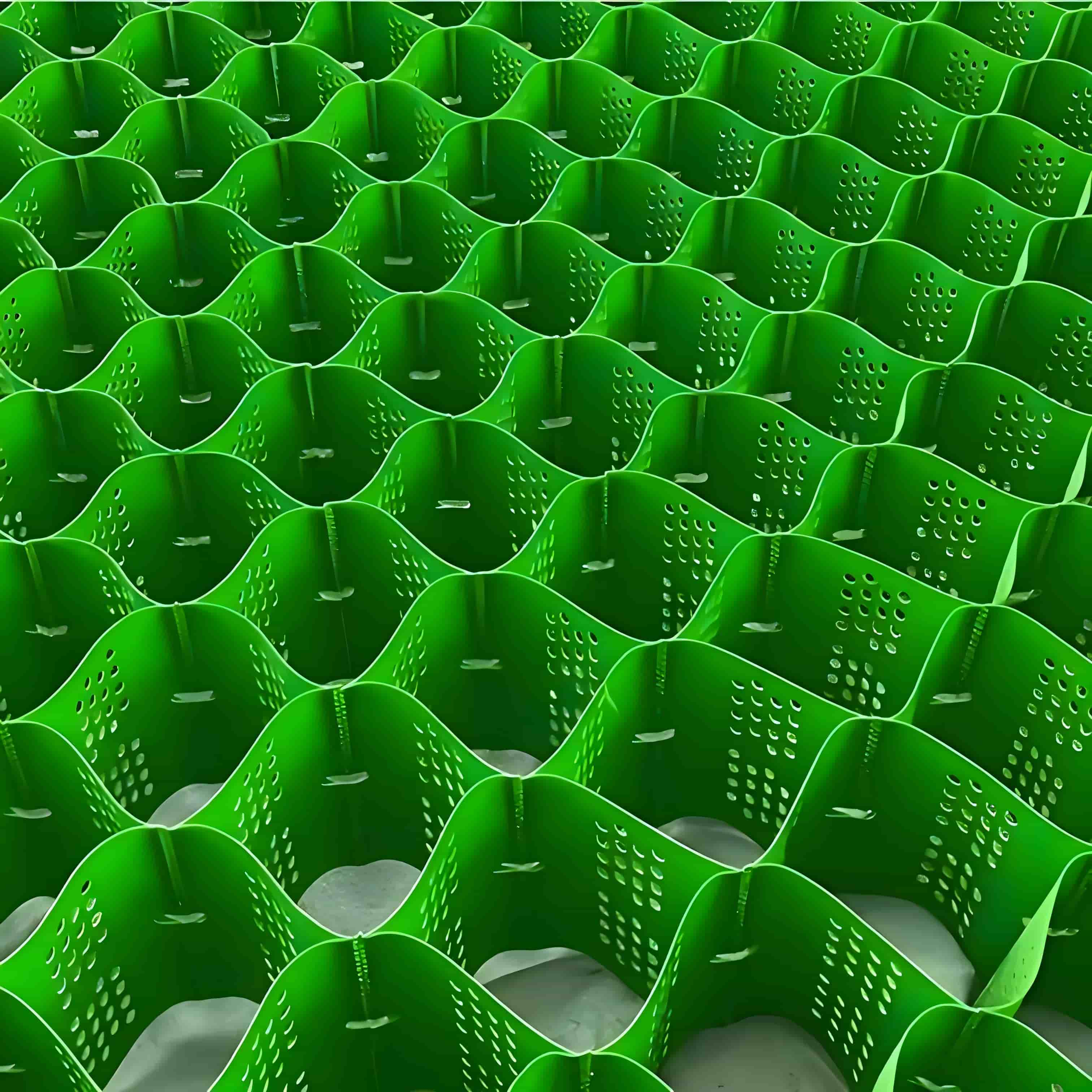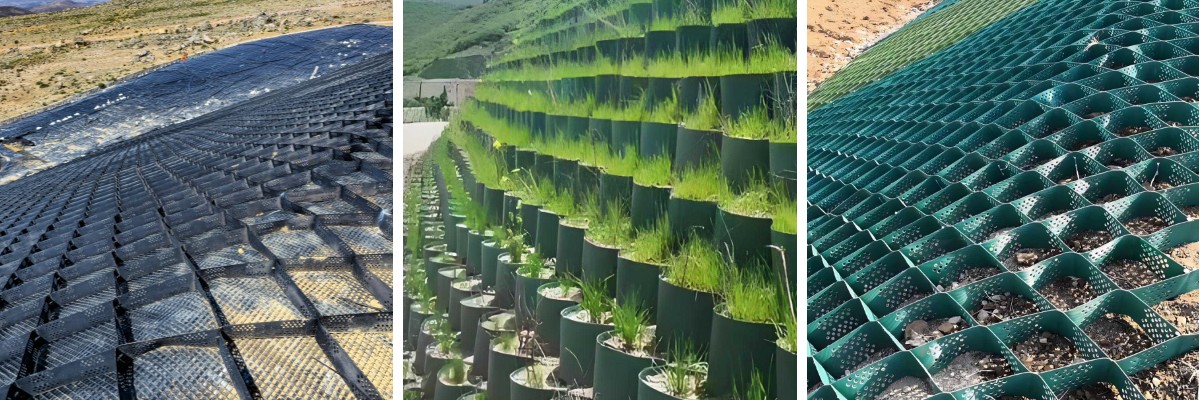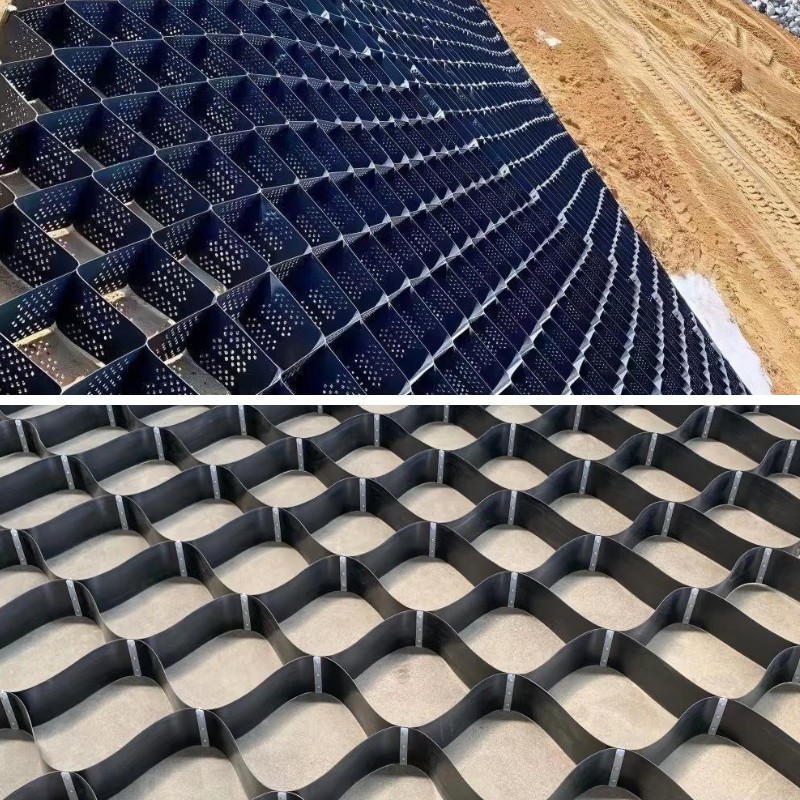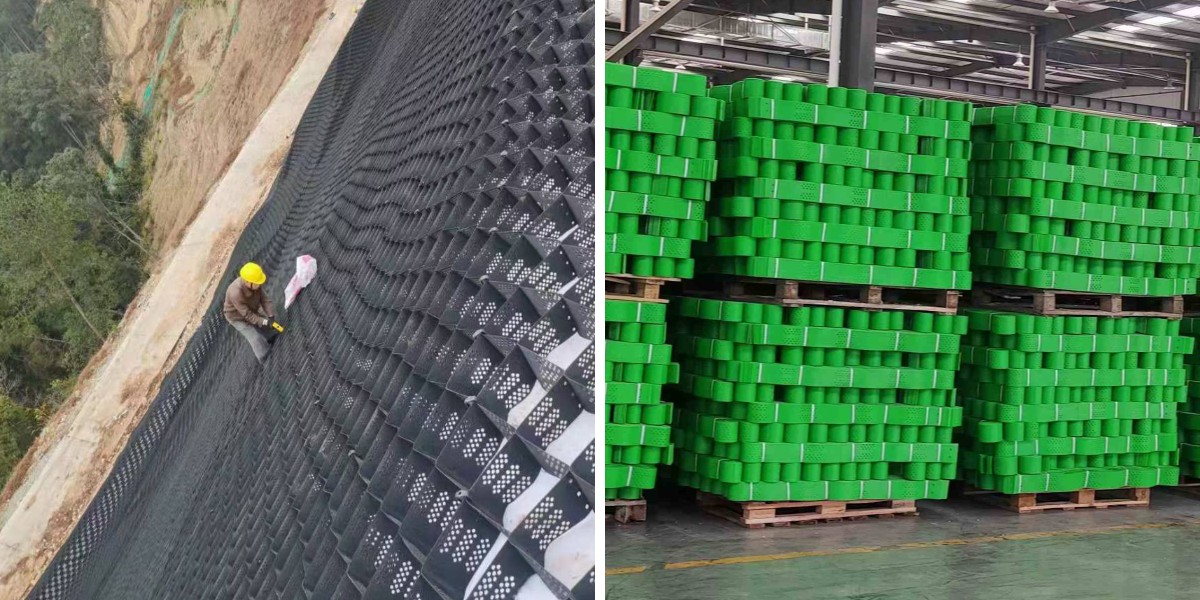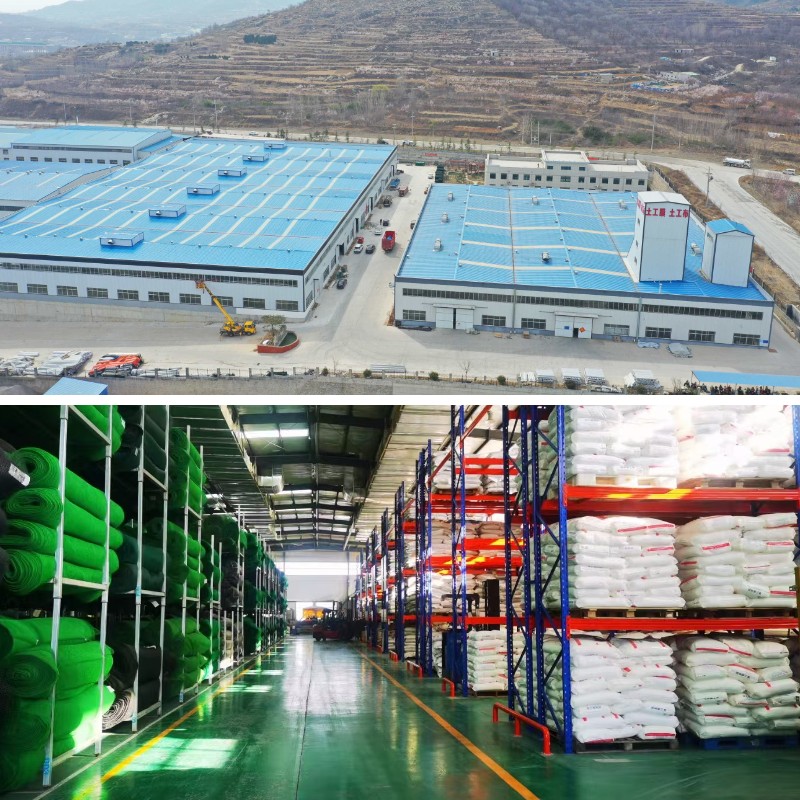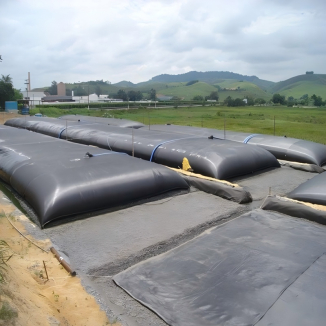HDPE Geocell
1. Strengthen foundation bearing capacity: Strong ability to disperse loads, reduce settlement, and significantly improve foundation bearing performance.
2. Stable soil structure: By limiting the displacement of soil particles through lateral constraints, the shear resistance and overall stability of the soil are enhanced.
3. Efficient permeable drainage: Structural pores and channels facilitate the discharge of water and prevent soil softening.
4. Convenient and economical construction: lightweight, easy to transport, simple to lay, shortened construction period and reduced costs.
5. Excellent durability: acid and alkali resistance, corrosion and aging resistance, adaptability to various environments, long service life.
6. Widely applicable scenarios: covering multiple fields such as transportation, water conservancy, mining, etc., suitable for various soil reinforcement needs.
Product Introduction
HDPE Geocell is a new type of geotechnical engineering material, usually made of high-density polyethylene and other polymer materials processed by special processes such as stretching and welding. It is in the form of a sheet before unfolding, making it easy to transport and store. After unfolding, it forms a three-dimensional grid with a honeycomb structure, and the height and size of the cells can be adjusted according to specific engineering requirements.
This unique three-dimensional structure enables it to tightly integrate with the soil, by exerting lateral constraints on the soil, limiting the lateral displacement of soil particles, and consolidating loose soil into a whole, effectively improving the shear strength and stability of the soil, reducing foundation settlement, and enhancing the bearing capacity of the foundation. At the same time, its grid structure has good permeability, which can accelerate the discharge of water inside the soil, avoid water accumulation and softening of the soil, and further ensure the stability of the engineering structure.
In terms of application, geogrids are widely used in roadbed treatment of highways and railways, and can cope with the challenges brought by soft soil foundations; It also plays an important role in dam protection, channel lining, and other aspects of hydraulic engineering; In addition, in scenarios such as mine reclamation, slope greening, and airport runway construction, it has become an ideal choice for engineering reinforcement due to its simple construction, low cost, and strong durability.
Product Parameters
order number | raw and processed material | |||||||
test item | unit | polytene | sulan | polyester | ||||
Extruded type | Stretch type | Extruded type | Stretch type | Extruded type | Stretch type | |||
1 | tensile strength | kN/m | ≥20 | ≥100 | ≥23 | ≥100 | ≥30 | ≥120 |
2 | Tensile yield strain | % | ≤15 | — | ≤15 | — | ≤15 | - |
3 | Tensile fracture strain | % | — | 8~ 20 | — | 6~ 15 | — | 8~ 20 |
4 | Carbon black content a | % | 2. 0~ 3. 0 | |||||
5 | Carbon black dispersion a | — | There should be no more than one level 3 data item in ten data items and no level 4 or 5 data items | |||||
6 | 200℃ oxidation induction time | min | ≥20 | ≥20 | — | |||
7 | Tensile load stress cracking | h | ≥300 | — | ||||
8 | B. Resistance to artificial climate aging retention rateb | % | ≥80 | |||||
9 | Chemical resistance performance retention rate c | % | — | ≥80 | ||||
Product Application
Geogrids, with their unique three-dimensional constraint characteristics and multifunctionality, have become a key material for improving structural stability and reducing construction difficulty in multiple engineering scenarios. Their applications cover important fields such as transportation, water conservancy, and mining, and can solve engineering pain points in different scenarios.
Transportation engineering foundation treatment: In the construction of highways, railways, and airport runways, whether it is the soft soil foundation faced by new projects or the settlement problem encountered during the renovation of old roads, geogrids can play a significant role. It evenly distributes the upper load to a larger range of foundation soil through a grid structure, effectively improving the strength of soft soil foundation with weak bearing capacity and reducing uneven settlement by 30% -50%. For the embankments of highways, the track foundations of railways, and the runway foundations of airports, it can ensure that they remain flat for a long time, easily coping with the heavy load impact caused by high-frequency vehicle traffic, train operation, and aircraft takeoff and landing.
Water conservancy engineering protection and reinforcement: When applied to water conservancy facilities such as dams and channels, the value of geogrids is particularly prominent. In dam construction, it can form strong lateral constraints on the soil of the dam slope, greatly enhancing the anti sliding performance of the dam slope and reducing the risk of dam failure and collapse by more than 60%. As for the channel, after laying the geocell, it can not only prevent the water and soil loss of the channel slope, but also accelerate the drainage of accumulated water from the dam body and around the channel, prevent the soil from softening due to long-term accumulated water, ensure the stability of the dam and channel in severe weather such as flood and rainstorm, and ensure the long-term safe operation of the water conservancy project.
Mining reclamation project: The land left in mining areas after mining is often loose, which can easily cause serious soil erosion and surface subsidence. Geogrids play an important role in mine reclamation, as they can penetrate deep into loose soil layers and aggregate dispersed soil particles into a cohesive whole through a grid structure, effectively reinforcing the loose soil layers. This has created a stable soil environment for vegetation planting, increasing the survival rate of vegetation by more than 40% and assisting in the rapid restoration of ecological vegetation in mining areas. At the same time, the reinforced soil can effectively resist surface deformation, reduce the occurrence of surface subsidence, promote the re transformation of land resources in mining areas into usable arable land, forest land, etc., and achieve sustainable utilization.
Slope greening and protection: In the treatment of slopes along highways, railways, and mountains, geogrids demonstrate a dual advantage of "engineering reinforcement+ecological restoration". For steep slopes, it can firmly restrain the soil on the surface of the slope, prevent disasters such as landslides and collapses caused by rainwater erosion and gravity, and increase the stability of the slope by more than 50%. At the same time, its grid structure provides an ideal carrier for spray greening. The sprayed grass and shrub seeds can grow stably in the grid chamber. With the gradual development of vegetation roots, they work together with the geotechnical grid chamber to further reinforce the slope and beautify the surrounding environment, turning the originally exposed slope into a green landscape belt.
In summary, the application of geogrids in various fields not only solves the problems of soil instability and low construction efficiency in traditional engineering through scientific structural design, but also improves engineering quality, reduces maintenance costs, and balances structural safety and ecological protection. It is a high-quality engineering material that combines practicality and economy, and has an irreplaceable position in modern engineering construction.


